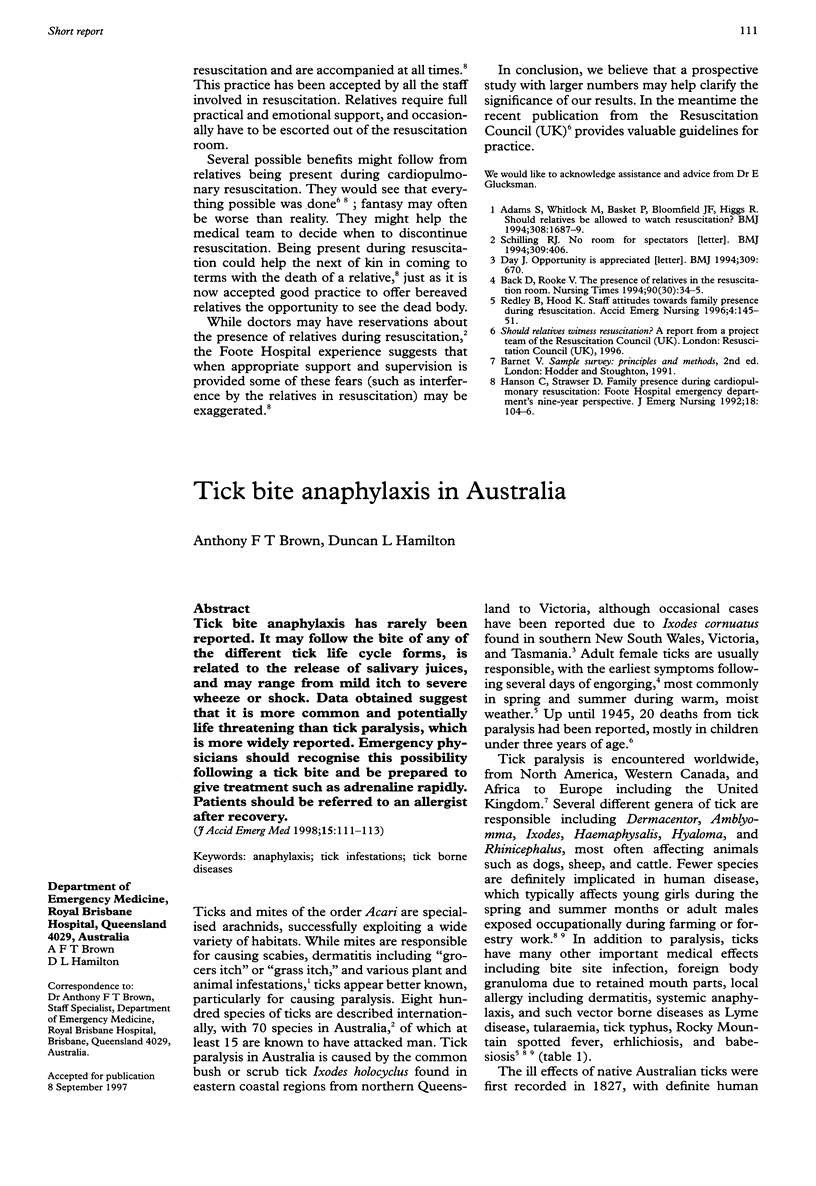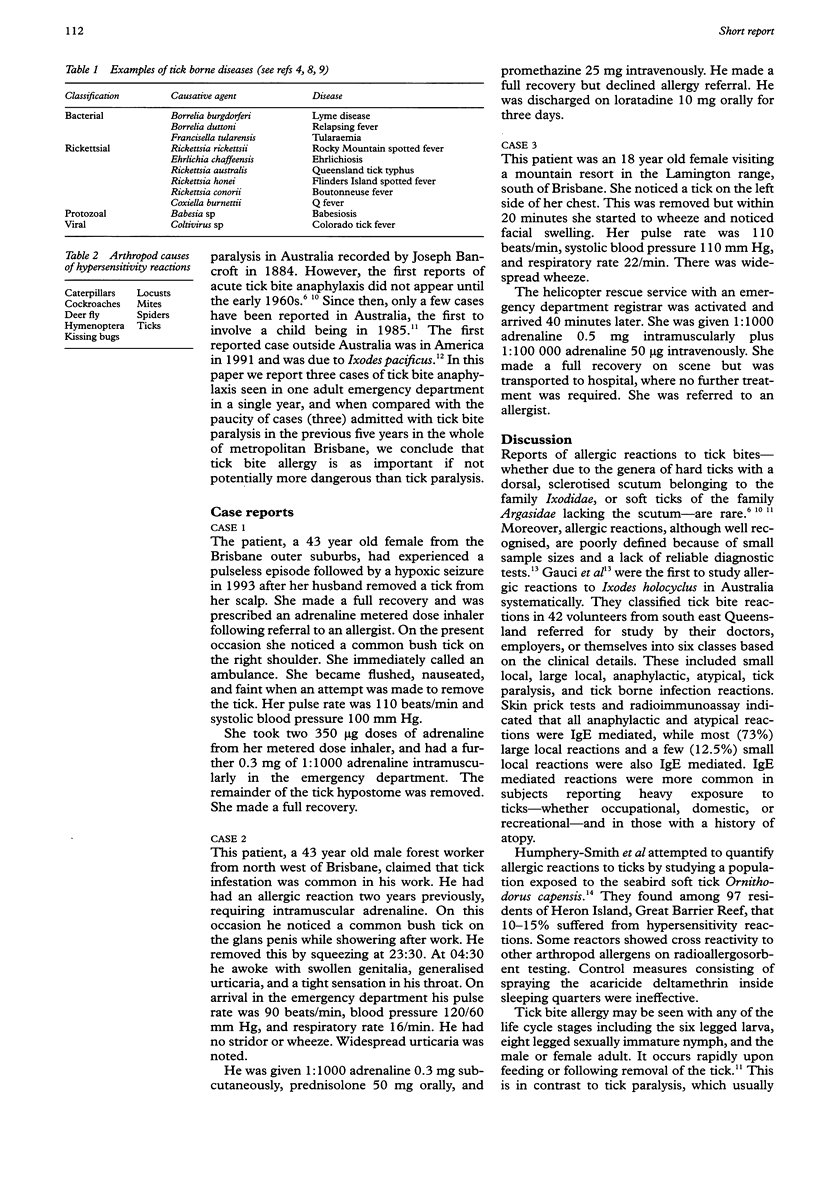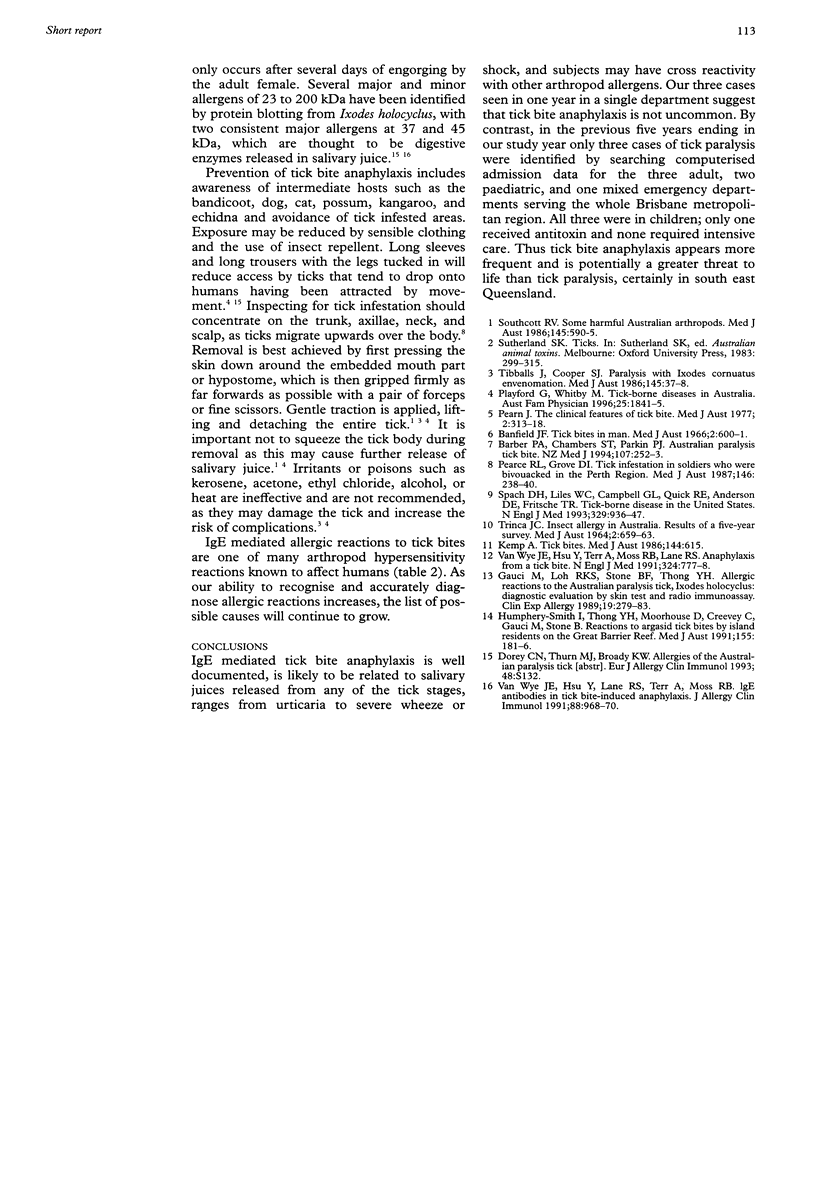Abstract
Tick bite anaphylaxis has rarely been reported. It may follow the bite of any of the different tick life cycle forms, is related to the release of salivary juices, and may range from mild itch to severe wheeze or shock. Data obtained suggest that it is more common and potentially life threatening than tick paralysis, which is more widely reported. Emergency physicians should recognise this possibility following a tick bite and be prepared to give treatment such as adrenaline rapidly. Patients should be referred to an allergist after recovery.
Full text
PDF


Selected References
These references are in PubMed. This may not be the complete list of references from this article.
- Banfield J. F. Tick bites in man. Med J Aust. 1966 Sep 24;2(13):600–601. [PubMed] [Google Scholar]
- Barber P. A., Chambers S. T., Parkin P. J. Australian paralysis tick bite. N Z Med J. 1994 Jun 22;107(980):252–253. [PubMed] [Google Scholar]
- Gauci M., Loh R. K., Stone B. F., Thong Y. H. Allergic reactions to the Australian paralysis tick, Ixodes holocyclus: diagnostic evaluation by skin test and radioimmunoassay. Clin Exp Allergy. 1989 May;19(3):279–283. doi: 10.1111/j.1365-2222.1989.tb02384.x. [DOI] [PubMed] [Google Scholar]
- Humphery-Smith I., Thong Y. H., Moorhouse D., Creevey C., Gauci M., Stone B. Reactions to argasid tick bites by island residents on the Great Barrier Reef. Med J Aust. 1991 Aug 5;155(3):181–186. doi: 10.5694/j.1326-5377.1991.tb142190.x. [DOI] [PubMed] [Google Scholar]
- Kemp A. Tick bites. Med J Aust. 1986 May 26;144(11):615–615. [PubMed] [Google Scholar]
- Pearce R. L., Grove D. I. Tick infestation in soldiers who were bivouacked in the Perth region. Med J Aust. 1987 Mar 2;146(5):238–240. doi: 10.5694/j.1326-5377.1987.tb120228.x. [DOI] [PubMed] [Google Scholar]
- Pearn J. The clinical features of tick bite. Med J Aust. 1977 Sep 3;2(10):313–318. doi: 10.5694/j.1326-5377.1977.tb99163.x. [DOI] [PubMed] [Google Scholar]
- Playford G., Whitby M. Tick-borne diseases in Australia. Aust Fam Physician. 1996 Dec;25(12):1841–1845. [PubMed] [Google Scholar]
- Southcott R. V. Some harmful Australian arthropods. Scorpions, mites, ticks and myriapods. Med J Aust. 1986 Dec 1;145(11-12):590–595. [PubMed] [Google Scholar]
- Spach D. H., Liles W. C., Campbell G. L., Quick R. E., Anderson D. E., Jr, Fritsche T. R. Tick-borne diseases in the United States. N Engl J Med. 1993 Sep 23;329(13):936–947. doi: 10.1056/NEJM199309233291308. [DOI] [PubMed] [Google Scholar]
- TRINCA J. C. INSECT ALLERGY IN AUSTRALIA: RESULTS OF A FIVE-YEAR SURVEY. Med J Aust. 1964 Oct 24;2:659–663. [PubMed] [Google Scholar]
- Tibballs J., Cooper S. J. Paralysis with Ixodes cornuatus envenomation. Med J Aust. 1986 Jul 7;145(1):37–38. doi: 10.5694/j.1326-5377.1986.tb113741.x. [DOI] [PubMed] [Google Scholar]
- Van Wye J. E., Hsu Y. P., Lane R. S., Terr A. I., Moss R. B. IgE antibodies in tick bite-induced anaphylaxis. J Allergy Clin Immunol. 1991 Dec;88(6):968–970. doi: 10.1016/0091-6749(91)90257-o. [DOI] [PubMed] [Google Scholar]


